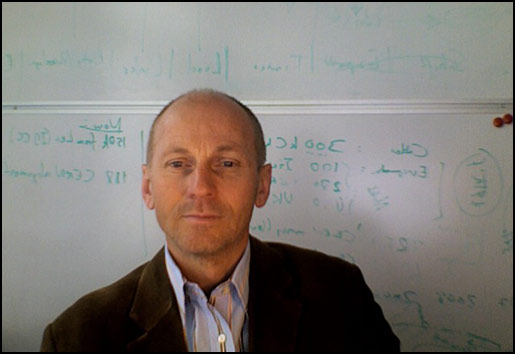
ATLAS e-News
23 February 2011
Super-LHC preparation gains momentum – and some funding
21 April 2008

Steinar Stapnes, who is leading the ATLAS side of the SLHC-PP project
CERN took a significant step towards guaranteeing the long-term future of ATLAS and the LHC on 1st April as the Super LHC-Preparatory Phase (SLHC-PP) project began to operate.
“More and more, there is an understanding that LHC and ATLAS will run for longer than the ten years we originally planned for,” says Steinar Stapnes, who is one of the two Deputy Spokespersons and is leading the ATLAS side of the SLHCPP proejct. “We may run until 2020 or 2025.”
But lengthening the working life of the LHC and ATLAS involves more than simply delaying the final switch-off. Some parts of ATLAS detectors have a limited lifetime, in particular the inner detector.
Furthermore, a lot of the technology within ATLAS was designed more than ten years ago. “Since then, we have basically been implementing these technologies,” says Steinar. “In some cases - the computer CPU, for instance, but also in some other cases - we’ve been able to wait until the last moment and use the latest technology, but in many areas we’re using older technology.”
If it's possible to run ATLAS beyond the planned ten year period, the SLHC team will look at several areas where improved technology can improve the physics output. The accelerator itself and two of the detectors – ATLAS and CMS – will likely be upgraded around 2017, according to the proposals set out in the SLHC project.
Within ATLAS, a steering group and project office, lead by Nigel Hessy and David Lissauer, has been in place for some time to organise work for the upgrade. Now the European Union (EU) has confirmed funds until 2011 to help bring those upgrade plans, and similar plans in CMS and for the LHC itself, to the point that they can be laid before funding agencies around the world.
The work itself will continue to be carried out in the framework of the existing ATLAS upgrade organization, but “Super LHC-PP will certainly help us to provide technical descriptions of the work involved, a schedule, a cost estimate, and an initial memorandum of understanding,” says Steinar. “That’s something that describes the project in a way that will allow funding agencies to decide how to get involved.”
Coordinating the upgrade efforts between LHC, ATLAS and CMS is a positive move that will lend greater weight to the project. “It gives us an improved political and scientific framework, which is useful,” says Steinar. “One can’t have some pieces prepared and other pieces missing.”
The EU money and increased focus and long term operation of LHC and ATLAS are welcome as construction work on ATLAS draws to a close. “Some of the Collaboration members have been building the detector for ten years or more, and this is really what they like to do,” says Steinar. “You’ll rarely see them curled up over a computer looking at the data. They will go back to the lab after having built the detector, and look at new ideas in the field to work out how to build an improved ATLAS for the upgrade. So these ATLAS members are very important and valuable not only for the impressive job they have done, but also for the long term success of ATLAS.”
Although the EU grant does not guarantee that the SLHC project will go ahead, Steinar thinks it is highly likely that the LHC will be upgraded one way or another in the future. “Almost all accelerators go through a phase one, phase two and so on,” he says. “The LHC is going to be the most significant machine in the coming decade. To imagine that it wont have an extended lifetime and upgrade is almost inconceivable. It’s like building the basement and first floor of a house and realising that improving the loft will give you an extra 100 square meters of larger parameter space – you’ll do it. Maybe you can’t afford it right away, but it is very likely you’ll do it as soon as you can."
